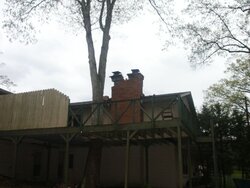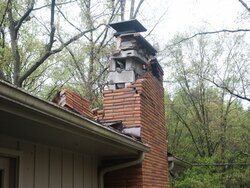Found the website I was mentioning earlier, it is the Lightning Protection Institute. Their home page intro states:
The Lightning Protection Institute is a not-for-profit organization founded in 1955. Our members are dedicated to ensuring that today’s lightning protection systems are the best possible quality - in design, materials and installation - so that precious lives and property can be protected from the damaging and costly affects of one of nature’s most exciting phenomenons - lightning.
Lightning is a unique form of electricity. Only a trained expert, familiar with this specialized industry and the national codes and standards that govern it, should install your system. For a list of companies with LPI certified individuals, click on the Locate an Installer button below.
They have a lengthy FAQ section that seems to suggest things that are somewhat different than those in the site you pointed at Cast. Among other things they seemed to think that picnic shelters were reasonably safe. They also agreed in many areas, however it seemed they were much calmer and less "paranoid" than the Dr. Dave site. I found the Dr. Dave site to be really over cautious to the extent where one should barely dare to venture out the door, while the LPI site didn't have as much direct advice, but seemed much more fact oriented and practical in their descriptions of what lightning does, and the implied means of making the best odds out of whatever shelter you have available.
However Wrench, I think you would find that there isn't much of a need for an invention - lightning seems to be a pretty well understood problem with a known technology for dealing with it. Judging from what LPI seemed to be saying, there are probably a lot of homes out there that are unprotected than should be, but it's basically a gambling call - odds of getting hit and suffering expen$ive damage vs. the known cost of installing a protection system...
Gooserider





 ;-P
;-P